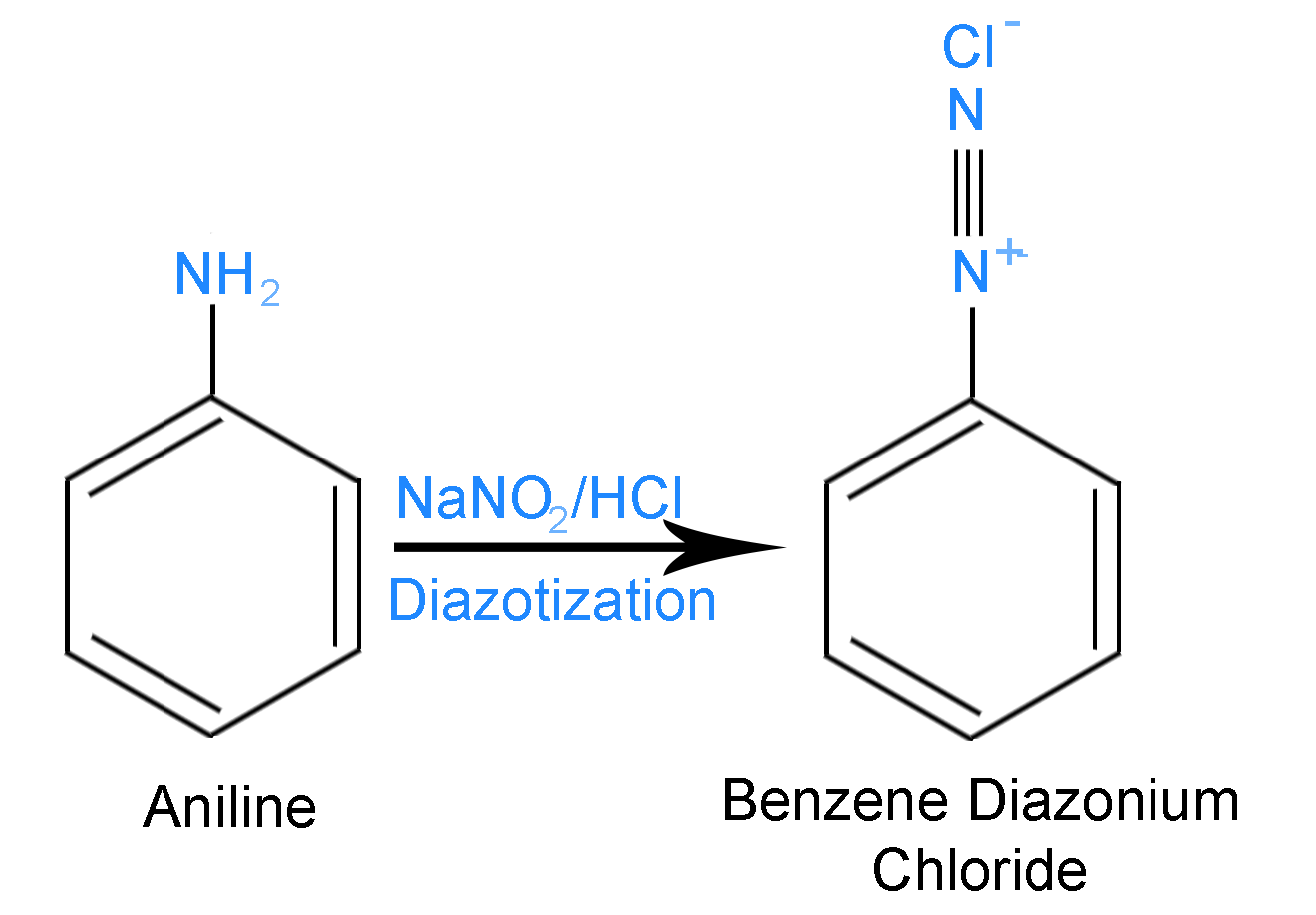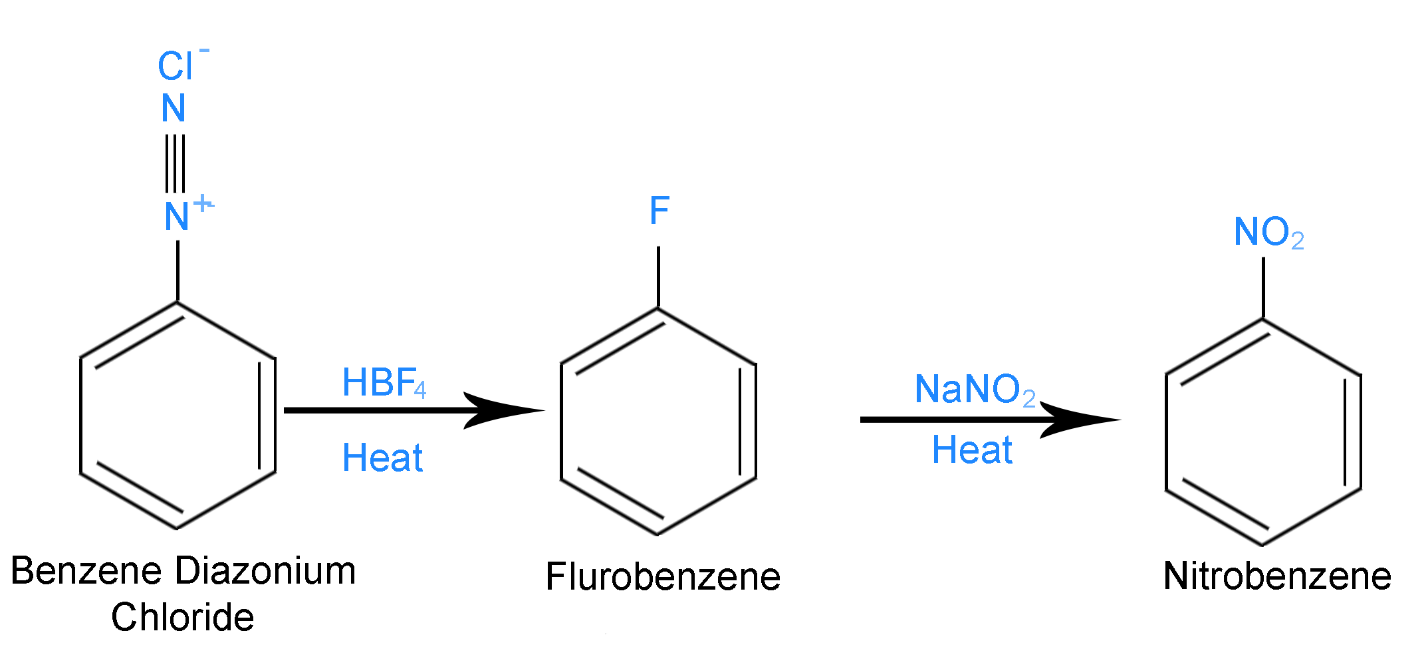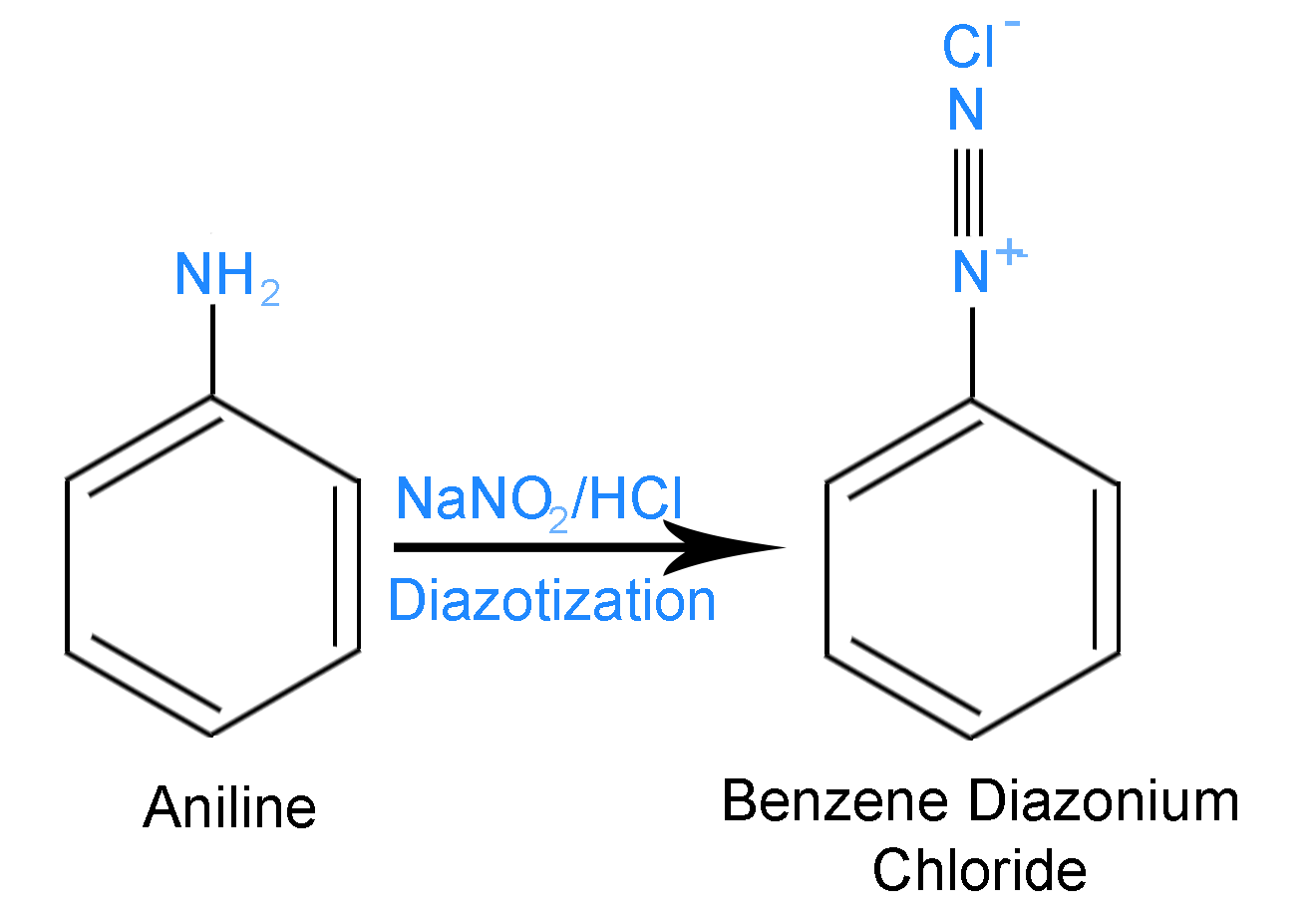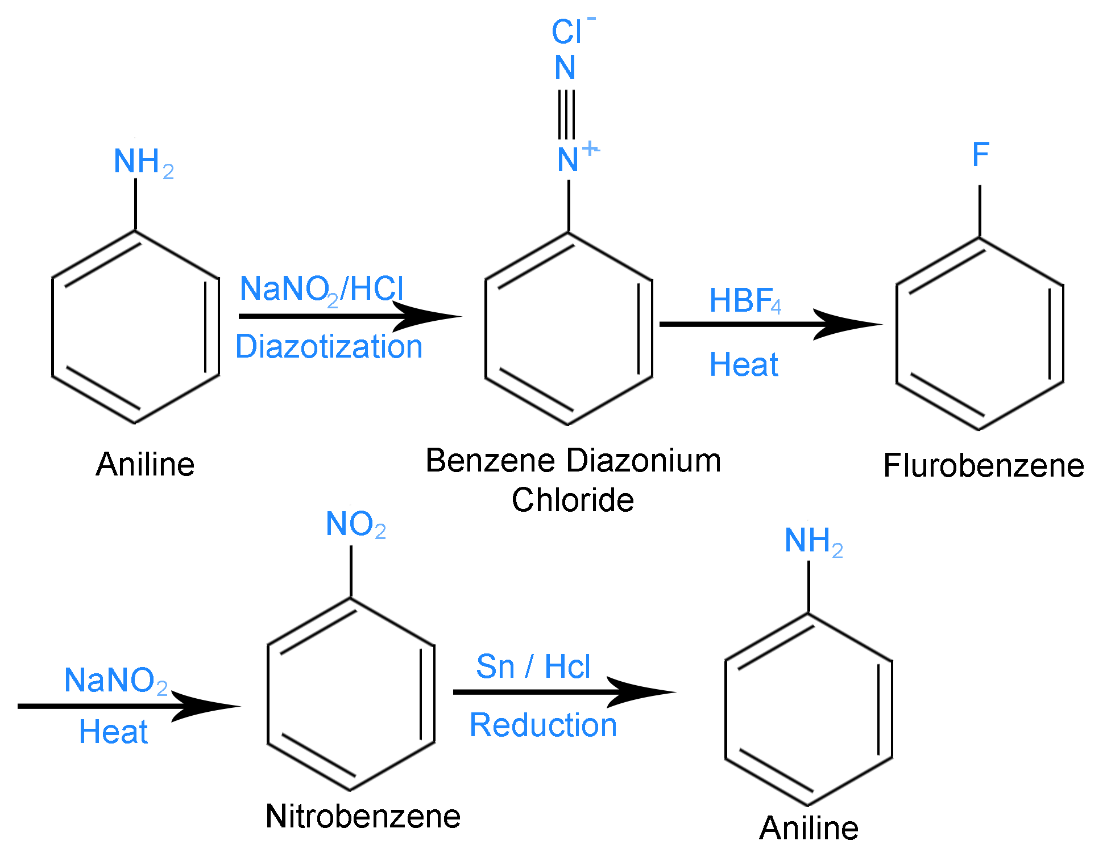Question
Question: Compound \[[A]\] is an aromatic amine which reacts with \[NaN{O_2} + HCl\] at \[273 - 278K\] and for...
Compound [A] is an aromatic amine which reacts with NaNO2+HCl at 273−278K and forms the compound [B]. Compound [B] react with HBF4 and obtain the product on further heating, in the presence of NaNO2 and confirm compound [C]. Compound [C] reduced in the presence of Sn/HCl to reform the compound [A]. Write the general name of ' A’,'B ' and 'C' and write the equation of all reactions involved?
Solution
You can figure out what the compounds are by looking at all the reactions and figure out a starting material that can undergo all the following reactions. You can start the solution by describing stepwise reactions with properly labelled diagrams. Then follow by summarizing all the reactions in one diagram.
Complete step-by-step answer:
The reactions occur in the following steps –
Step 1 – Aniline reacts with NaNO2 and HCl at 273−278K to form Benzene diazonium chloride. Aniline is a primary aromatic amine. Aniline is a compound which has an amino (NH2) group attached to a benzene ring. The reaction is shown below

Aniline is the compound [A] and Benzene Diazonium Chloride is the compound [B].
Step 2 - Benzene Diazonium Chloride reacts with HBF4 in the presence of heat forms fluorobenzene. Fluorobenzene on further heating with NaNO2 forms Nitrobenzene as the product. This reaction is shown below

Nitrobenzene is the compound [C] mentioned in the problem.
Step 3 – Nitrobenzene is reduced in the presence of Sn/HCl to form Aniline.
This reaction is shown below

The whole reaction is summarized in the following diagram

Hence, Aniline is the compound [A],Benzene Diazonium Chloride is the compound [B] and Nitrobenzene is the compound [C] mentioned in the problem.
Note: The reaction used in step 1 is used in making dyes and pigments. The reaction in step 2 is used to make fluorobenzene which is very important in controlling the carbon content in steel manufacturing. The second reaction in step 2 is used to produce nitrobenzene which is heavily used in lubricating oils in motors and machinery.
